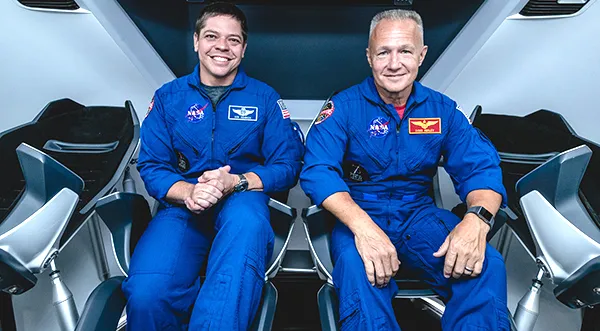
SpaceX’s Crew Dragon Marks 5 Years of Reshaping Space Travel: From Demo-2 to Beyond
Five years ago, on May 30, 2020, NASA astronauts Doug Hurley and Bob Behnken etched their names in history. Their mission aboard SpaceX's Crew Dragon spacecraft, dubbed Demo-2, wasn't just another launch; it symbolized the rebirth of American spaceflight and a pivotal shift towards commercial space exploration.

The Demo-2 mission broke a near-decade-long dependence on Russian spacecraft. Before this landmark event, the United States spent millions of dollars per seat on Soyuz rockets to transport astronauts to the International Space Station (ISS). SpaceX demonstrated a safer, more cost-effective approach, transforming the landscape.
The mission lifted off from Kennedy Space Center in Florida. 
Since then, SpaceX's Crew Dragon has become a workhorse for NASA’s human spaceflight program. It has flown ten operational NASA missions under the Commercial Crew Program, alongside five commercial missions. This includes private astronaut flights and partnerships with international space agencies, expanding the reach of space travel.
The implications extend beyond national borders. Companies like Axiom Space are leveraging SpaceX technology to facilitate the return of countries like India, Poland, and Hungary to manned spaceflights. These missions, sponsored by their respective governments, represent a renewed global interest in space exploration.
Even amidst political transitions, the NASA-SpaceX partnership has thrived. Initially fostered under President Obama, and gaining further momentum under President Trump, the collaboration demonstrates the power of bipartisan support for scientific advancement.

The results are tangible. Costs per mission drastically decreased, dropping from approximately $450 million to around $55 million. Furthermore, the turnaround time between flights shortened significantly, moving from two years for space shuttles to just months for the Crew Dragon.
Looking ahead, SpaceX, with its Starship rocket, aims to support NASA's ambitious plans for lunar and Martian missions. This continued innovation highlights the transformative impact of the initial Demo-2 mission.
The fifth anniversary of the Demo-2 mission serves as a powerful reminder of how far space exploration has come. Has the era of affordable and accessible space travel finally arrived? What future breakthroughs will SpaceX unlock? Share your thoughts in the comments below.